Summer Special: Perfect Paris Parks
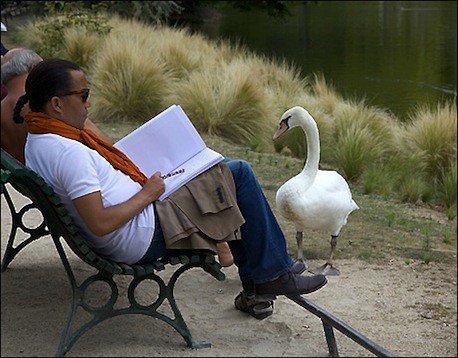
Thu 18 Aug 2011
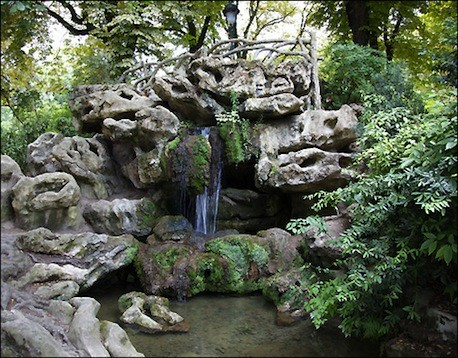
A grotto at Parc Montsouris. Photo: Steve Sampson.
Whether you’re a filmmaker or a couple of lovebirds, Paris parks are among the special places you want to head in summer. The problem is the most well-known attract too many people; by July, the Tuileries and Luxembourg gardens are dusty and bursting. This is when the city’s other green spaces come in handy.A top recommendation is Parc des Buttes Chaumont, a former quarry that joined other Paris parks in time for the Universal Exhibition of 1867. Known for its steep slopes and grand, sweeping scenery, this is an escape of choice for Parisians in the north. It boasts tall mountains (one crowned with a temple), as well as a lake accessible via suspension bridge. It has a longstanding nickname: the bridge of suicides. On the bright side there are waffle stands, Guignol theatres, children’s playgrounds—and three restaurants.
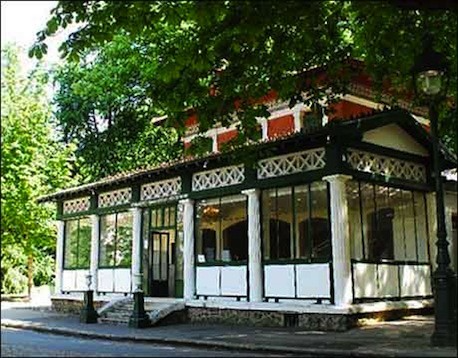
Rosa Bonheur, at Parc des Buttes
One of the latter is an update of the French guinguette, a bar-eatery-dancehall popular during la belle époque. The one in Buttes Chaumont, three years old this year, is called Rosa Bonheur in homage to the feminist painter. Here you’ll find simple, bio food and a trio of special house wines. This relaxed, informal spot stays open Wednesdays to Sundays from noon to midnight. But, by l’après-midi the dancehall becomes a hive of hipsters and the entry to it is limited by doormen. However, if you hover around the barriers as they go up, those on duty will usually include you.
Once inside, there is both a wide range of music and a cosmopolitan mix of smart young Parisians. The park itself is also at its prettiest once the sun goes down. To see Buttes Chaumont after dark without the clubbing, go to its delightful Silhouette Short Film Festival (August 27 to September 4), or in October during the Nuit Blanche.
Like Buttes Chaumont, after which it was modeled, Parc Montsouris is a gem among Paris parks. Those who live south of the Seine use it for both sport and strolls. Easily accessible by RER from St.-Michel, the huge green space sits alongside Cité U, a campus that houses students who come from around the world. They add their cosmopolitan chic to the Parc Montsouris mix: a blend of young families, les sportifs and retirees.
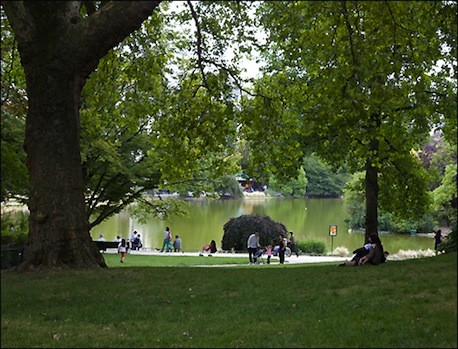
Parc Montsouris. Photo: Steve Sampson.
It was the English-born 18th-century landscape craze that inspired both Buttes Chaumont and Montsouris. Thus each of these Paris parks features unique qualities—the main one being a host of exotic, dramatic vistas. At Parc Montsouris, an artful stream flows into a giant lake surrounded by cascades, gentle climbs and charming meadows. An island at the lake’s center doubles as a home for rare birds. (The park’s population of sunbathing turtles was imported from Florida.) This landscape also features almost 200 types of trees, all positioned to keep every view romantic.
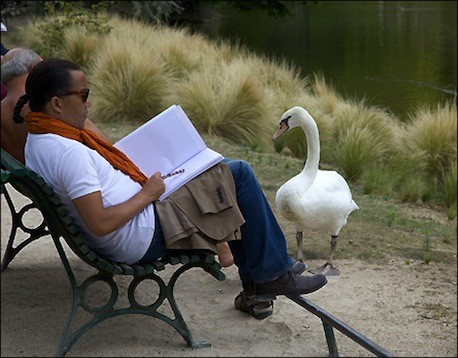
Parc Montsouris. Photo: Steve Sampson.
Critics may bemoan the fact that an RER track runs under the park. But, with 16 hectares (about 40 acres) of land, it’s hard to notice. Parc Montsouris is too full of idyllic spots—as well as children’s treats that include a Guignol theatre, a tiny train, a sandpit and other playgrounds.
More centrally located (and slightly more crowded) is Parc Monceau. Few Paris parks can match its mixture of the quirky and the elegant. It began in 1778 as a “Chinese garden,” an imitation of the English style based on the tales of missionaries. That trend blossomed into something quite fantastic, filling 18th-century parks with waterfalls, rockeries and grottoes.
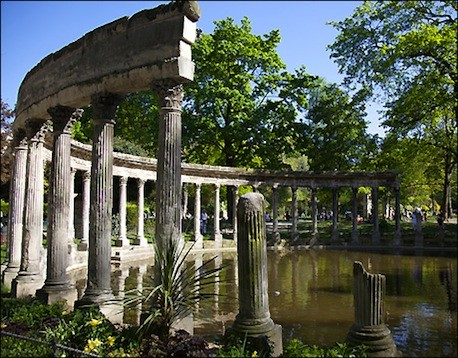
Parc Monceau. Photo: Steve Sampson.
The Parc Monceau of today, reshaped in the 19th century, retains this ambience in its “Roman” temples, Gothic ruins and Egyptian pyramid. Tweaked by some of the country’s legendary garden designers, it has always been a spot to be seen in. (Among all Paris parks, it was the favorite of both Marie Antoinette and Proust.) These days, it remains as fashionable as ever. Six local residents whose homes adjoin the park even have the right to use it as a personal garden.
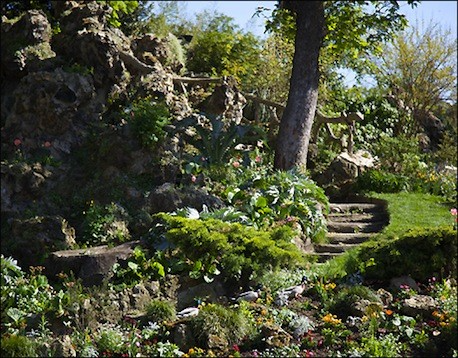
Parc Monceau. Photo: Steve Sampson.
Yet Parc Monceau belongs to everyone who loves its style. The same is true of Buttes Chaumont and Parc Montsouris. Among the finest Paris parks for either picnics or a stolen kiss, all offer something that will please any visitor.
TIPS
• Wi-Fi in the parks: All three parks are equipped with free Wi-Fi.
• Parc des Buttes Chaumont: Be sure to visit the Temple of Sybille, which crowns the park’s highest hill; you’ll be rewarded with a fabulous view of Montmartre. Afterward, stroll around the nearby rue de Mouzaïa (the gypsum extracted from under it helped build America’s White House). The street, named after a town in Algeria, boasts delightful 1890s “workers’ homes,” which are the work of architect Paul Casimir Fouquiau. The Russian Orthodox church St.-Serge de Radonège (on rue de Crimée) is also a must.
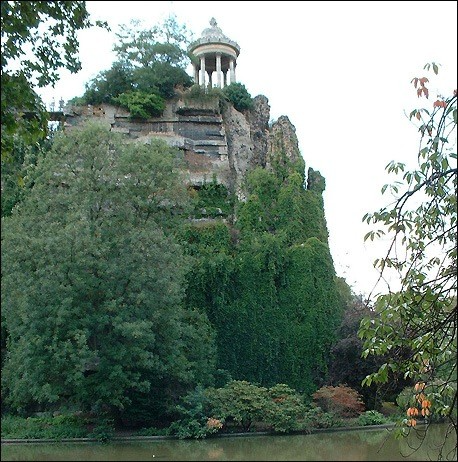
Temple of Sybille, at Parc des Buttes Chaumont. Photo: Courtesy Jotel.
• Parc Montsouris: Any fan of Art Deco architecture should check out the neighborhood. Here streets such as rue du Parc Montsouris, avenue Reille and rue Georges Braque (where the artist’s atelier once occupied at No. 6) you’ll see wonderful 1920s and 1930s villas and studios, created by names such as Le Corbusier, Pierre Jeanneret and André Lurçat.
• Parc Monceau: Don’t miss Musée Nissim de Camondo, a private museum located at the edge of the park. Once home to Count Moïse de Camondo (he named it after his son Nissim, killed in World War I), this splendid residence is a palace of luxuries. They include wonderful Sèvres and Meissen porcelain, Aubusson carpets and 18th-century furniture. A home with as much personality as the park.
Related links:
Parc des Buttes Chaumont
The bridge of suicides
Théâtre de Guignol
Rosa Bonheur
Silhouette Short Film Festival
Nuit Blanche
Parc Montsouris
Parc Monceau
Wi-Fi in the parks
Rue de Mouzaïa
L’Eglise St.-Serge de Radonège
Musée Nissim de Camondo